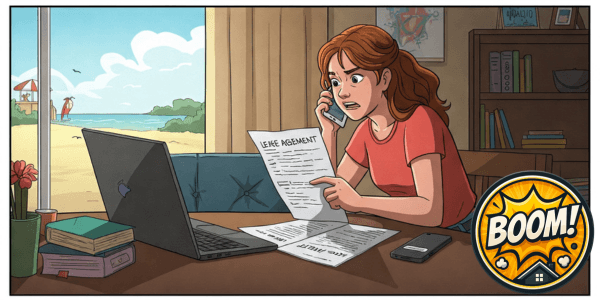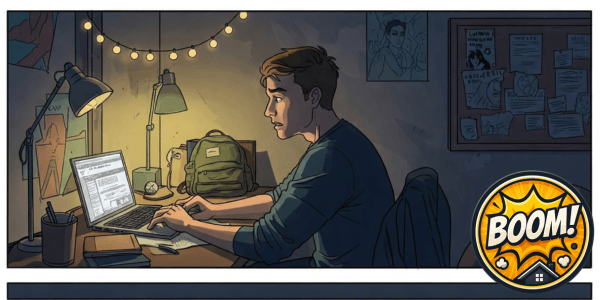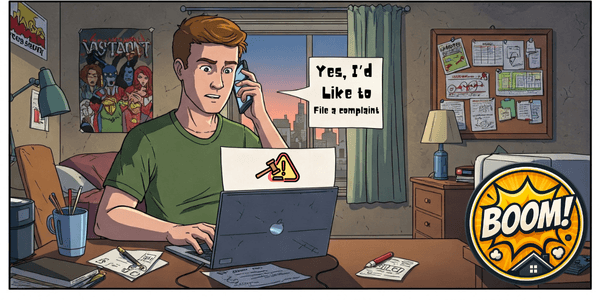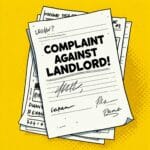How to File a Complaint Against a Landlord
Table of Contents

Introduction
When a landlord neglects critical obligations—such as ensuring habitable living conditions, addressing repairs, or preventing discriminatory practices—tenants may face unsafe environments, financial burdens, or legal disputes. Unresolved landlord violations can result in damages costing $200 to $2,000 or compromised health and safety. This guide, presented by RepairBoom, provides a formal, step-by-step framework for tenants to address landlord violations by filing a complaint, with specific reference to California statutes and broader guidance for other states. Optimized for how to file a complaint against a landlord, this resource empowers tenants to pursue tenant rights complaints with confidence.
Through three comprehensive steps—researching legal rights, documenting violations, and submitting a formal complaint—tenants can resolve disputes efficiently within 1–2 hours. Navigating even the most complex landlord violations. Supported by authoritative sources, including the U.S. Department of Housing and Urban Development (HUD) and the California Civil Rights Department (CRD), this guide ensures tenants act decisively. Download our complimentary Tenant Complaint Checklist to safeguard your rights and achieve a resolution
Before You Begin: Essential Considerations
Filing a complaint against a landlord demands meticulous preparation to ensure legal compliance and protect tenant interests:
- Lease Obligations: Examine your lease agreement to identify landlord responsibilities, such as maintenance or safety provisions, to establish grounds for a complaint.
- Evidence Requirements: Comprehensive documentation, including photos, videos, and written correspondence, is critical to substantiate claims, as emphasized by HUD’s tenant rights guidelines.
- Jurisdictional Variations: California mandates timely repairs under specific statutes, while other states have distinct timelines and remedies, necessitating localized research.
- Legal Implications: Improperly filed complaints or unauthorized actions (e.g., withholding rent without legal basis) may jeopardize deposits or tenancy rights, potentially costing $500–$1,000.
By planning ahead, you’ll minimize risks and fulfill renter responsibilities.

Step 1: Research Your Legal Rights and Landlord Obligations
A thorough understanding of tenant rights and landlord obligations forms the foundation for a successful complaint. Allocate some time to review your lease agreement and applicable laws to identify -landlord violations and establish legal grounds for your tenant rights complaints.
In California, the Civil Code § 1941.1 mandates that landlords maintain habitable premises, ensuring functional plumbing, heating, electrical systems, and weatherproofing. Violations, such as failure to repair a broken heater within a reasonable timeframe (typically 7–30 days, or 72 hours for urgent issues like no heat), contravene this statute. Additionally, the California Fair Employment and Housing Act (FEHA) prohibits discrimination based on race, disability, or other protected characteristics, with violations actionable through the CRD. Tenants may pursue remedies, such as repair-and-deduct or rent withholding, under Cal. Civ. Code § 1942, provided they adhere to strict legal procedures, including written notice and reasonable repair timelines.
For other states, consult state-specific landlord-tenant laws through resources like the state housing authorities. For instance, New York’s Warranty of Habitability (Real Property Law § 235-b) requires landlords to address critical repairs within 24–72 hours for emergencies, while Texas Property Code § 92.052 allows 7 days for essential fixes. HUD’s tenant rights portal (www.hud.gov) provides a national framework, detailing protections against discrimination under the Fair Housing Act (42 U.S.C. § 3604).
Tenants, particularly students, may access university counselors for guidance. Institutions like the University of California, Los Angeles (UCLA) offer student legal services or referrals through their Student Legal Services office, which can clarify tenant rights or connect students with local resources. Contact your university’s student affairs or legal services office to explore support options. Legal aid organizations, such as LawHelpCA (www.lawhelpca.org) in California or the Legal Services Corporation (www.lsc.gov) nationally, provide free or low-cost assistance for eligible tenants. These resources ensure tenants are well-informed before proceeding.

Step 2: Document Landlord Violations
Comprehensive documentation is essential to substantiate a housing discrimination complaint or other landlord violations. Dedicate some time to compiling evidence that clearly demonstrates the issue and its impact the landlord violations are having.
Use a smartphone to capture timestamped photos or videos of violations, such as water leaks, mold growth, or structural damage. Include wide-angle shots for context (e.g., a flooded bathroom) and close-ups for detail (e.g., mold on walls). Maintain a detailed log in a notebook or digital document, recording the date of discovery, a description of the issue, and its effects (e.g., “leaky pipe reported Nov 1, causing water damage and health concerns”). Store all evidence in a secure cloud service, such as Google Drive, organized by category (e.g., “Bathroom_Violation_2025”).
Send written repair requests or complaints to your landlord via email with a read receipt or certified mail, retaining copies for your records. In California, the Civil Rights Department (CRD) requires such documentation for discrimination complaints, while local housing authorities, like the Los Angeles Housing Department (LAHD), mandate evidence for habitability issues. Similarly, HUD’s(Housing and Urban Development) complaint process for other states emphasizes timestamped visuals and written records. A California tenant who documented persistent mold secured $2,500 in remediation costs by presenting clear evidence to the LAHD. Submitting this documentation to your landlord before escalating to authorities provides significant leverage, as it demonstrates your seriousness and creates a formal record of non-compliance.
Clearly outline the issue, reference applicable laws (e.g., California Civil Code § 1941.1 for habitability), and set a reasonable deadline for resolution (e.g., 7–14 days). This approach often prompts landlords to act to avoid legal scrutiny, potentially resolving the issue without further escalation. For example, a tenant who sent a detailed mold complaint with photos and a legal citation secured repairs within 10 days, avoiding costly health risks. If the landlord remains unresponsive or fails to resolve the issue within the specified timeframe, proceed to Step 3 to file a formal complaint with the appropriate authority.

Step 3: Submit a Formal Complaint to the Appropriate Authority
If landlord violations remain unresolved, filing a formal complaint with the relevant authority is the next step. Allocate 30–60 minutes to prepare and submit your tenant rights complaints, leveraging evidence from Step 2.
In California, tenants may file with:
- California Civil Rights Department (CRD): For discrimination, harassment, or retaliation, submit a complaint within one year via www.calcivilrights.ca.gov or by calling (800) 233-3212. The CRD enforces FEHA, addressing violations like discriminatory evictions or refusal to accommodate disabilities.
- Local Housing Authorities: For habitability issues, contact municipal agencies, such as the LAHD in Los Angeles (housing.lacity.gov, (866) 557-7368). The LAHD investigates violations of the Rent Stabilization Ordinance and housing codes, potentially ordering repairs or fines.
- Health Departments: Report health hazards, such as mold or pest infestations, to county health agencies, which can mandate corrective action.
For other states, options include:
- State Housing Agencies: Contact state-specific departments, such as Colorado’s Division of Housing (cdola.colorado.gov/housing, (303) 864-7810) or New York’s Division of Housing and Community Renewal (hcr.ny.gov, (866) 275-3427).
- HUD: For discrimination in federally assisted housing, file within one year at www.hud.gov or (800) 669-9777, per the Fair Housing Act.
- Local Tenant Advocacy: Tenant unions, like the Chicago Tenants Union, offer mediation or referrals.
Legal aid is vital for navigating complex cases with landlord violations. In California, LawHelpCA (www.lawhelpca.org) connects tenants to free legal services, while the Legal Services Corporation (www.lsc.gov) supports tenants nationwide. University counselors, particularly at institutions with legal clinics (e.g., UC Berkeley’s Student Legal Services), can refer students to tenant unions or pro bono attorneys. Follow up with agencies regularly, as investigations may lead to mediation, repairs, or penalties.
FAQ: Filing a Complaint Against a Landlord
What constitutes grounds for filing a complaint against a landlord?

Grounds for filing a tenant rights complaint include landlord violations such as habitability issues, discrimination, or harassment. Habitability violations occur when a landlord fails to maintain essential living conditions, such as repairing broken plumbing, addressing mold, or ensuring functional heating, which California’s Civil Code § 1941.1 mandates as a landlord’s duty to provide a safe, functional premise. Discrimination, such as refusing to rent based on race or disability, violates the Fair Housing Act, while harassment might include threats or unwarranted eviction attempts. For example, if your landlord ignores a leaking pipe for weeks, causing water damage, this could justify a complaint for failing to uphold habitability standards.
How do I file a complaint against my landlord in California?

To file a complaint against a landlord in California, address discrimination issues by submitting a detailed complaint to the California Civil Rights Department (CRD) within one year of the incident at www.calcivilrights.ca.gov or by calling (800) 233-3212; include evidence like emails or photos showing discriminatory behavior. For habitability issues, such as a broken heater, file with the Los Angeles Housing Department (LAHD) at housing.lacity.gov if you’re in Los Angeles, or contact your local jurisdiction’s housing authority, providing detailed evidence like timestamped photos of the issue and prior repair requests.
What are the options for tenants in other states?

Tenants outside California can address landlord violations by contacting their state housing agencies or the U.S. Department of Housing and Urban Development (HUD). For habitability issues, state agencies like New York’s Division of Housing and Community Renewal (hcr.ny.gov, (866) 275-3427) investigate complaints about unsafe conditions, such as lack of heat; check your state’s government website for the appropriate agency. For discrimination complaints, file with HUD within one year at www.hud.gov or call (800) 669-9777, ensuring evidence like photos, written correspondence, or witness statements supports your claim. For example, a Texas tenant filed a HUD complaint after being denied a lease renewal due to race, leading to a mediated resolution with the landlord.
Where can I access legal aid or university support?

California tenants can access free or low-cost legal aid through LawHelpCA (www.lawhelpca.org), which connects you to local organizations offering guidance on tenant rights complaints, such as navigating habitability disputes or discrimination claims. Nationally, the Legal Services Corporation (www.lsc.gov) provides similar support, helping tenants in other states find legal assistance based on income eligibility. For college students, university legal clinics, such as UCLA’s Student Legal Services, offer referrals to tenant advocacy groups or pro bono attorneys; contact your university’s student affairs office to inquire about available resources. For instance, a UC Berkeley student used their legal clinic to draft a complaint against a landlord for unlawful eviction, securing a favorable settlement.
Need More Rental help like this?
How to Mount a TV on the Wall in 3 Easy Steps | Free Guide
Renter Move-In Checklist | 5 Free Essential Steps
How to replace a smoke alarm battery | Free Guide – RepairBoom
How to unclog a drain in 4 easy steps | Free Guide – RepairBoom


